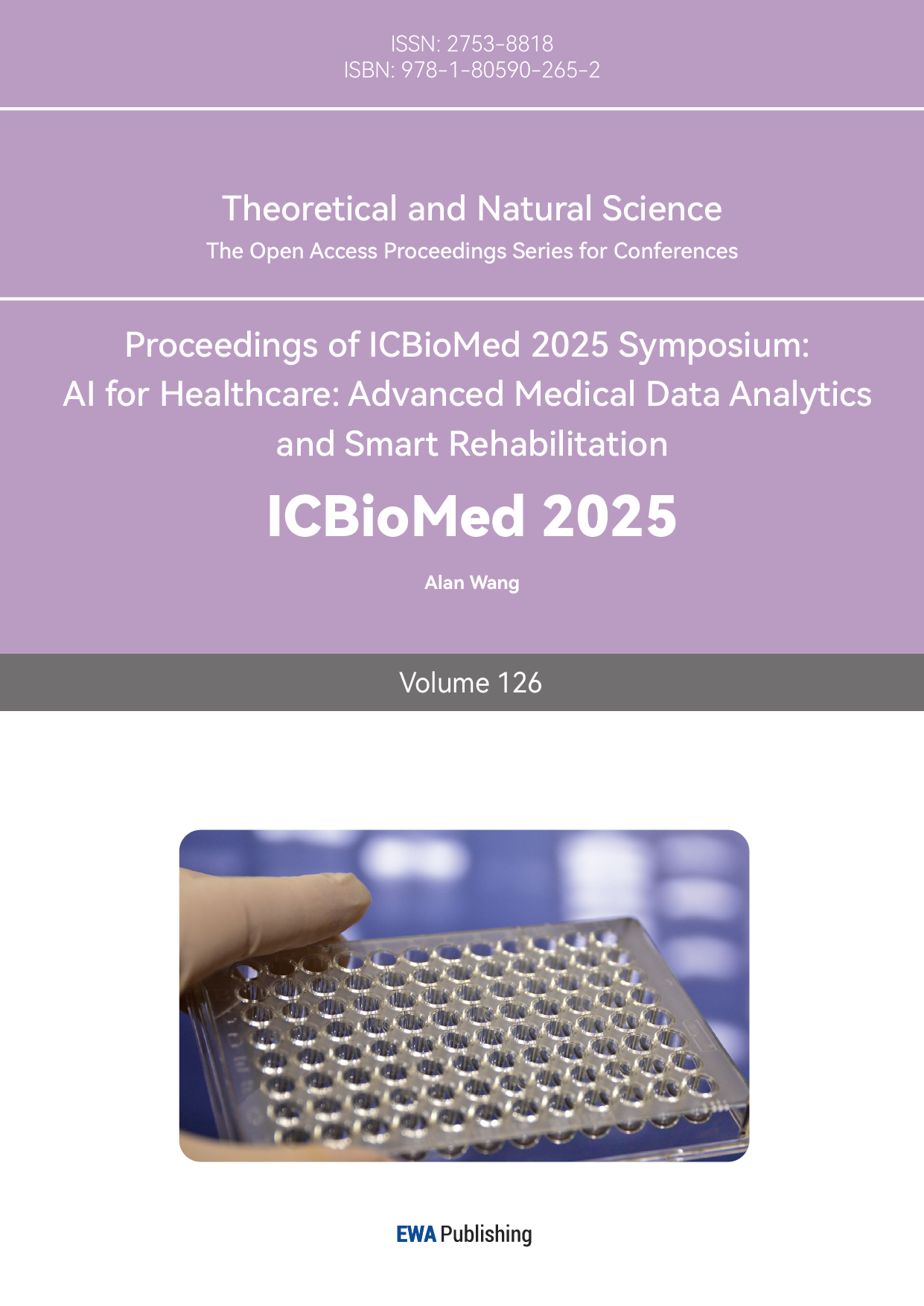References
[1]. Levy, D., Sharma, S., Grigorova, Y., Farci, F., & Le, J. K. (2024年10月6日).Aortic dissection.StatPearls - NCBI bookshelf.https: //www.ncbi.nlm.nih.gov/books/NBK441963/
[2]. Eliferat Abdul Kyim & Cihongbo. (2025). Stanford BResearch status of imaging characteristics and clinical prognosis of aortic dissection. China's medical innovation., 22 (09), 184-188.
[3]. Hua Liu, Jun Zhang, Bin Liu, Qunxian Zhang, Tao Liu, Ling Luo & Guilian He.(2020).Comparison of the efficacy and safety of TEVAR in the acute and non-acute phases of Stanford type B aortic dissection: a single-centre prospective cohort study. Journal of Huazhong University of Science and Technology (Medical Science), 49(03), 318-322.
[4]. FENG Danni. (2023). Preparation and Application of Exercise Rehabilitation Cognition and Intention Questionnaire for Aortic Dissection Based on HAPA Theory (Master's Thesis, Huazhong University of Science and Technology). https: //link.cnki.net/doi/10.27157/d.cnki.ghzku.2023.000314 doi: 10.27157/d.cnki.ghzku.2023.000314.
[5]. Experts Consensus Group on Home-based Cardiac Rehabilitation in China.(2022).Expert consensus on home rehabilitation of patients with cardiovascular diseases in China. China Recycling Magazine, 37(02), 108-121.
[6]. Bartee, S., Shrestha, S., Ramos, B., Bilbrey, T., Carbone, P., Schussler, J. M., Deutsch, R., & Adams, J. (2016).The specificity of the test in a cardiac rehabilitation setting led to a return to high-intensity outdoor activities after aortic dissection repair. Proceedings (Baylor University. Medical Centre). 29(2), 151-153.https: //doi.org/10.1080/08998280.2016.11929395
[7]. Brown, T. M., Pack, Q. R., Beregg, E. A., Brewer, L. C., Ford, Y. R., Forman, D. E., Gathright, E. C., Khadanga, S., Ozemek, C., & Thomas, R. J. (2024). Core components of cardiac rehabilitation programs: 2024 Update: A scientific Statement from the American Heart Association and the American Association of Cardiovascular and Pulmonary Rehabilitation. Journal of Cardiopulmonary Rehabilitation and Prevention. https: //doi.org/10.1097/hcr.0000000000000930
[8]. Meng Xiaoping. Physical-medical integration and cardiac rehabilitation. Journal of Rehabilitation., 1-7.
[9]. Alcazar, J., Losa-Reyna, J., Rodriguez-Lopez, C., Alfaro-Acha, A., Rodriguez-Mañas, L., Ara, I., García-García, F. J., & Alegre, L. M. (2018). The sit-to-stand muscle power test: An easy, inexpensive and portable procedure to assess muscle power in older people. Experimental Gerontology, 112, 38–43. https: //doi.org/10.1016/j.exger.2018.08.006
[10]. Yang Ling & Du Xueping. (2023). Application of 6-minute walk test in community cardiac rehabilitation of patients with stable coronary artery disease. Chinese General Practice.21(08), 1356-1359.doi: 10.16766/j.cnki.issn.1674-4152.003122.
[11]. Chaddha, A., Eagle, K. A., Braverman, A. C., Kline‐Rogers, E., Hirsch, A. T., Brook, R., Jackson, E. A., Woznicki, E. M., Housholder‐Hughes, S., Pitler, L., & Franklin, B. A. (2015). Exercise and physical activity for the Post–Aortic Dissection patient: the clinician’s conundrum. Clinical Cardiology, 38(11), 647–651. https: //doi.org/10.1002/clc.22481
[12]. Qin Meimei, Ding Xiaorong, Yang Xin, Wu Guiqin, Dou Lijun & Jumei. (2023). Research progress on postoperative rehabilitation exercise in patients with aortic dissection. Journal of Nursing, 38(11), 126-129.
[13]. Chaddha, A., Kline-Rogers, E., Woznicki, E. M., Brook, R., Housholder-Hughes, S., Braverman, A. C., Pitler, L., Hirsch, A. T., & Eagle, K. A. (2014). Activity recommendations for postaortic dissection patients. Circulation, 130(16). https: //doi.org/10.1161/circulationaha.113.005819
[14]. Jia Zhang, Yashan Zhou, Chunyan Zheng, Yanjun Liu & Jie Liu. (2024). Effect of seated Baduanjin in rapid postoperative rehabilitation of patients with Stanford type B aortic dissection. Chinese contemporary medicine.31(15), 180-183.
[15]. Gual, N., García-Salmones, M., Brítez, L., Crespo, N., Udina, C., Pérez, L. M., & Inzitari, M. (2020). The role of physical exercise and rehabilitation in delirium. European Geriatric Medicine, 11(1), 83–93. https: //doi.org/10.1007/s41999-020-00290-6
[16]. Haley, M. N., Casey, P., Kane, R. Y., Dārziņš, P., & Lawler, K. (2019).Delirium Management: Let's Get Physical Exercise, shall we? Systematic reviews and meta-analyses. Australian Journal of Ageing, 38(4), 231-241. https: //doi.org/10.1111/ajag.12636
[17]. XU Ying. (2023, June 29). Effect of cardiopulmonary rehabilitation exercise intervention on cardiopulmonary function after percutaneous coronary intervention in elderly patients with acute myocardial infarction
[18]. Wang Xiaohai, Tang Lin, & Pan Miao. (2024). Application of exercise interventions in the treatment of depression. International Journal of Psychiatry, 51(4), 1023-1025.



